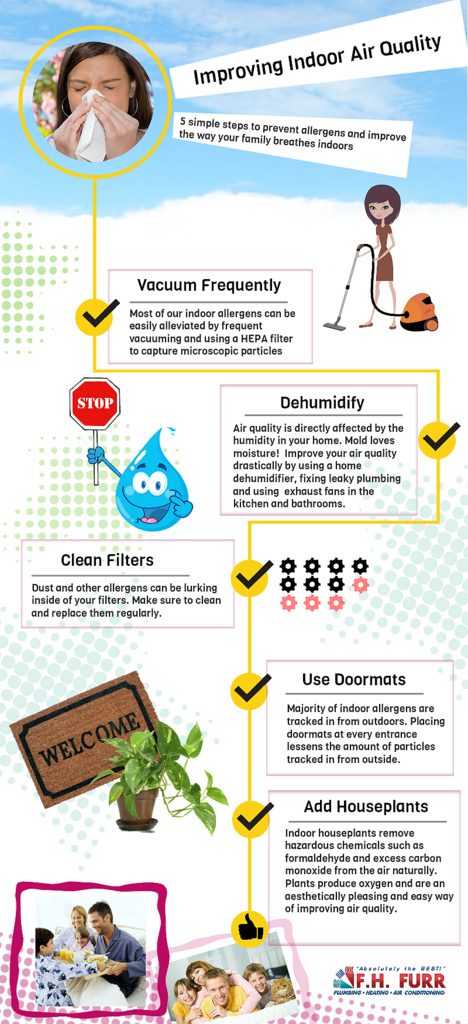 Healthy Air Quality Tips
Healthy Air Quality Tips
A lot of people have pets as their companions at home and some even treat them as their own children whom they love so much and cannot live without. These pets are not only mere animals who accompany them but they are a big part of the lives of many animal lovers. They may even have their own private spaces in certain parts of the house, so they don’t feel like an outsider.
Related: Problems with high humidity
Most pets like dogs, cats, hamsters, guinea pigs, and even mice have furs which make them extra cute, extra fluffy and extra lovable and huggable. Due to their fluffiness, their owners can’t resist to hug them all the time. However, excessive fur circulating in the house may be an allergen to some and cause people with sensitivities to get sick. Guests with allergies may not be too eager to visit your place after knowing you have a pet or two at home because they would certainly not enjoy their short stay in your place.
Despite the excessive love we feel towards our pets, we must also acknowledge that those we love can also cause us harm. It is only wise to be mindful of our health while still showing our pets our affection for them. Pet owners should pay attention to the quality of the indoor air at home because if they don’t do anything about it, they become more susceptible to health problems brought about by poor indoor air quality than others who do not have pets at home.
Healthy Indoor Air Quality Tips for Pet Owners
To prevent poor indoor air quality, it’s smart to consider what you can do to keep your home free of common pollutants from pets. One of the most problematic of these pollutants is dander. Dander is found on cats, dogs, rabbits, and other furry pets, and is essentially microscopic particles of dried skin. It is so problematic because, it, not pet hair, is the leading cause of people’s allergic reactions to pets. It can also cause considerable problems for your indoor air quality; even people without pet allergies can suffer bad effects from airborne dander.
Read full article at CPHAC.
Poor indoor air quality is a risk to people, machines, and the environment. It can make us feel dizzy, tired, and uncomfortable. Worse, it also contributes to the drastic increase in our energy consumption resulting in higher utility bills. However, we don’t need to worry that much anymore about some HVAC systems due to the continuous advancements made in the HVAC industry. There are features that can help you deal with your current home situation. If you are clueless about what you need, get in touch with an expert to help you make the best decision for your home.
A Bad Smell
High humidity levels in spring and summer will often make you and your family feel hot and uncomfortable. It can also lead to allergen growth, dust mites, cockroaches, and other problems that cause stale or musty smells. Contaminants can also grow underneath wallpaper and carpeting, inside your insulation, underneath sinks, and on ceilings. If you always feel better when you’re away from your home, you may have a hidden allergen or contaminant problem.
Unexplained Health Problems
Some of the most common and unpleasant warning signs of poor indoor air quality you should watch out for are unexplained health problems like nosebleeds, irritated eyes, coughing, and sneezing. Open a window to get rid of some of the pollutants in your home, and use an indoor air purifier or an air cleaner to prevent allergy or asthma symptoms.
Click here to read more.
Fortunately for us who experience troubles with indoor air quality, whole-home ventilators can address this problem. It works hand-in-hand with HVAC systems to push stale air out and draw fresh air in the house. They also work continuously which means we can enjoy breathing fresh air for as long as the system is running.
There are numerous benefits that HVAC systems give us. However, along with these benefits come disadvantages that are often because of the wrong choice of equipment for our space or chronic neglect of these machines. It is important for us to know how to counter these problems so that we will be able to keep ourselves comfortable and not always bothered by HVAC issues that can make living doubly hard for many nowadays.
This video tells you more about pets and indoor air quality: